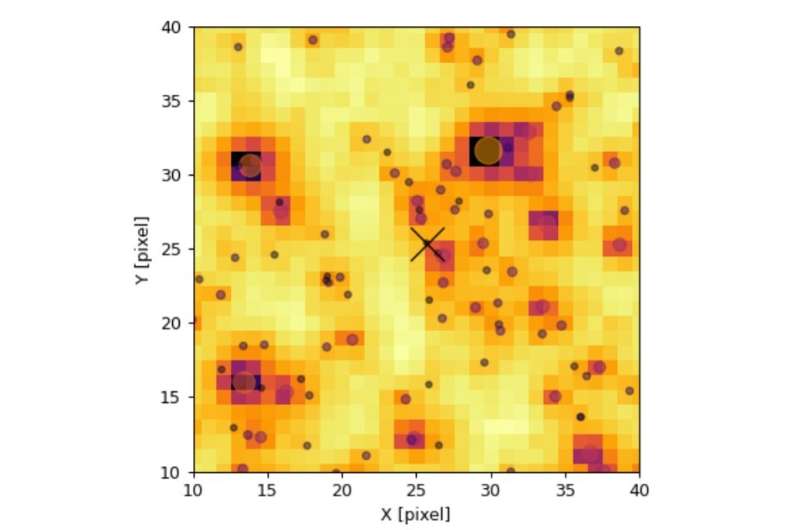August 15, 2022 report
Astronomers detect new eclipsing post-common-envelope binary

Astronomers have conducted photometric and spectroscopic observations of a binary system known as TIC 60040774. Results of the observational campaign shed more light on the properties of this system, revealing that it is an eclipsing post-common-envelope binary. The study was published August 5 on arXiv.org.
A common envelope (CE) is gas that contains a binary star system. Observations show that once the more massive star in a binary leaves the main sequence, and depending on the initial conditions, dynamically unstable mass transfer or a tidal instability may force such a system to enter the CE phase.
The CE evolution produces a significant population of close, but detached white-dwarf/main-sequence (WDMS) binaries. Approximately a quarter of WDMS are close enough that they must be the so-called post-common-envelope binaries (PCEBs), and about 10% of these systems exhibit eclipses. Studies of PCEBs could advance our knowledge regarding formation and evolution of close compact binary stars.
That is why a team of astronomers led by Rhorom Priyatikanto of the National Research and Innovation Agency in Bandung, Indonesia, investigated TIC 60040774—one of the close binaries with a low-mass secondary star, located some 437 light years away. Previous studies have suggested that it may be a PCEB.
"In this paper, we present the discovery and characterization of a bright new eclipsing PCEB. The system, TIC 60040774, is a high proper-motion object that lies close to the WD sequence in the color-magnitude diagram and is located fairly nearby," the researchers wrote.
The team analyzed the light curve of TIC 60040774 from the Transiting Exoplanet Survey Satellite (TESS), multi-band photometry from the Virtual Observatory SED Analyzer (VOSA), and spectroscopic data obtained the Southern African Large Telescope (SALT). They found that this system consists of a young white dwarf and an M dwarf companion.
According to the study, the white dwarf in TIC 60040774 has a mass of nearly 0.6 solar masses and an effective temperature of 14,050 K. When it comes to the companion dwarf star, it was found to be of spectral type M6.5, with a mass of about 0.11 solar masses and effective temperature at a level of 2,759 K.
The orbital period of the system was estimated to be 9.71 hours, therefore relatively long when compared to other known PCEBs. The total age of TIC 60040774 the system was calculated to be approximately 1.024 billion years and the researchers assume that the common-envelope stage occurred some 243 million years ago.
Summing up the results, the astronomers concluded that TIC 60040774 most likely started from binary with a late B primary star with a mass of around 2.5 solar masses and an initial separation of approximately 2.4 AU. However, they added that more precise high-cadence photometry is required in order to better understand the history and nature of this system.
More information: R. Priyatikanto et al, Characterisation of the eclipsing post-common-envelope binary TIC 60040774. arXiv:2208.02986v1 [astro-ph.SR], arxiv.org/abs/2208.02986
© 2022 Science X Network





















